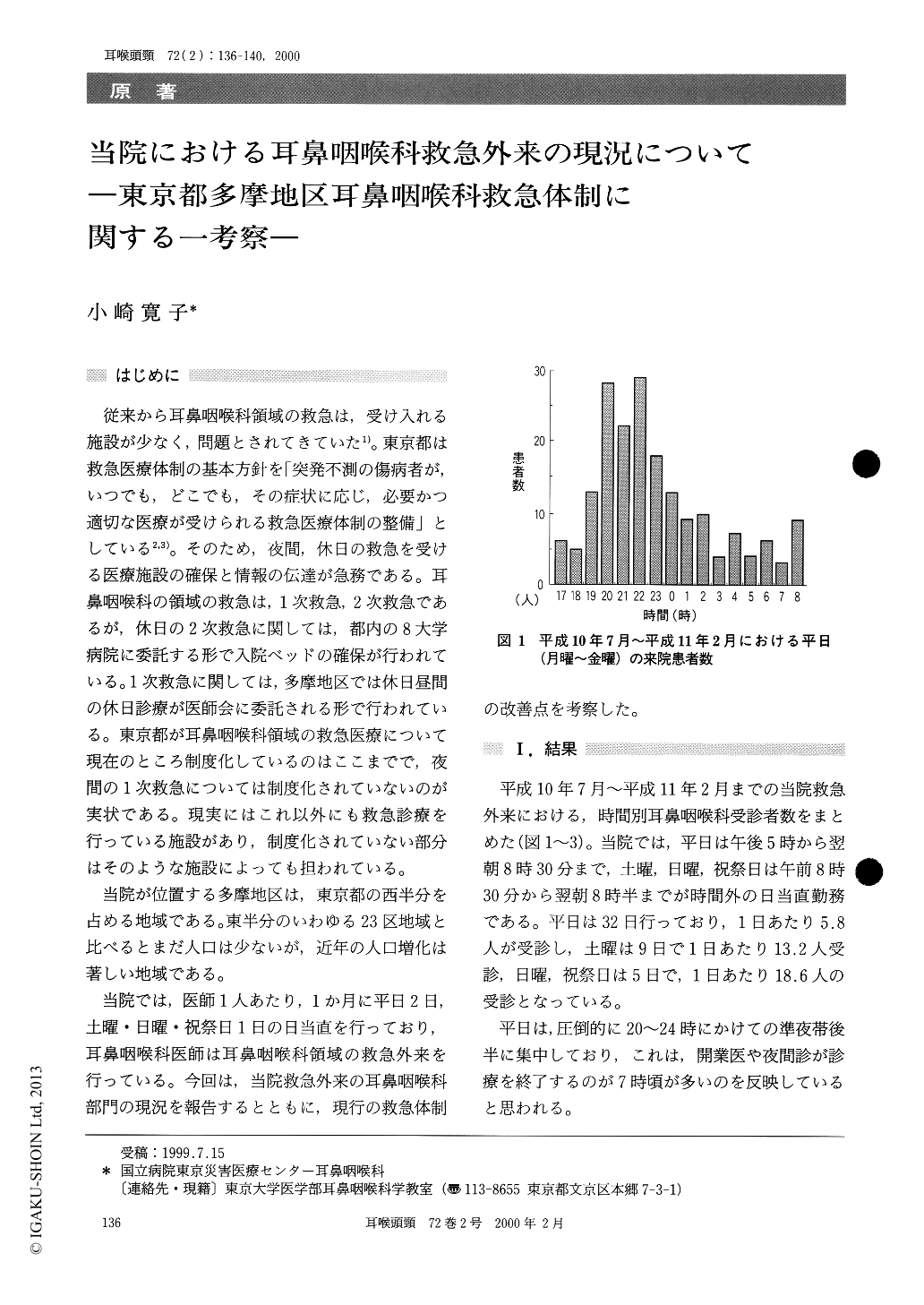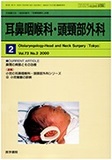Japanese
English
- 有料閲覧
- Abstract 文献概要
- 1ページ目 Look Inside
はじめに
従来から耳鼻咽喉科領域の救急は,受け入れる施設が少なく,問題とされてきていた1)。東京都は救急医療体制の基本方針を「突発不測の傷病者が,いつでも,どこでも,その症状に応じ,必要かつ適切な医療が受けられる救急医療体制の整備」としている2,3)。そのため,夜間,休日の救急を受ける医療施設の確保と情報の伝達が急務である。耳鼻咽喉科の領域の救急は,1次救急,2次救急であるが,休日の2次救急に関しては,都内の8大学病院に委託する形で入院ベッドの確保が行われている。1次救急に関しては,多摩地区では休日昼間の休日診療が医師会に委託される形で行われている。東京都が耳鼻咽喉科領域の救急医療について現在のところ制度化しているのはここまでで,夜間の1次救急については制度化されていないのが実状である。現実にはこれ以外にも救急診療を行っている施設があり,制度化されていない部分はそのような施設によっても担われている。
当院が位置する多摩地区は,東京都の西半分を占める地域である。東半分のいわゆる23区地域と比べるとまだ人口は少ないが,近年の人口増化は著しい地域である。
当院では,医師1人あたり,1か月に平日2日,土曜・日曜・祝祭日1日の日当直を行っており,耳鼻咽喉科医師は耳鼻咽喉科領域の救急外来を行っている。今回は,当院救急外来の耳鼻咽喉科部門の現況を報告するとともに,現行の救急体制の改善点を考察した。
The present status of an emergency clinic of the otolaryngological department in the National Hospital Tokyo Disaster Medical Center is reported.Patients came from all over Tama district.
As there is the rotation system for daytime in holiday, the number of patients in the daytime was smaller than night. The most busiest time was from 7 to 11 in the evening. Most of the patients were those who have not visited the hospital before, and were not expected to visit again. As telephone consultation have become more frequent than before, the workload of the doctors on duty has been heavy.

Copyright © 2000, Igaku-Shoin Ltd. All rights reserved.


